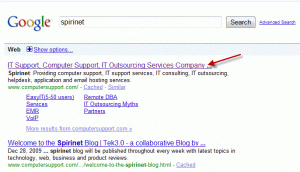Of Websurfers and Writers: The New Googlebot
Search Engine Optimization – it’s a buzz world. SEO is a set of techniques used by writers and website editors to make their content have better page rankings on search engines like Google and Yahoo. The end result is the attempt to generate more site traffic. Since Google is the world’s largest search engine most SEO techniques are aimed at appeasing the revered Googlebot. Googlebot is the algorithm that Google uses to categorize websites. Its sophistication is why you can type in beetle and car into the search bar and get websites about Volkswagen instead of insects in cars or a mish-mash of cars and insects. Web developers have used tricks to attempt to game the system. For example, typing in Beetle and car can give results about insurance and other unrelated search terms because the web developers used tags in an attempt to link to the two terms. Google has proclaimed that they want to level the playing field between sites that naturally pop up because of relevant content, and those who used tags and fake traffic to gain their page ranking. This new system has many implications for content writers and web users alike.
One of the major changes in the prolific search engine has been coined semantic search. It’s Google’s hope that their new search engine will understand how words work together to provide more poignant results. You may notice that sometimes when you type in common questions like: “How many feet in a mile?” that the search engine will display an answer for you: “1 mile = 5280 feet”. In the coming months you should expect more of that. Google plans on displaying more direct information in this manner. The hope seems to be to decrease time looking for information and increase the search engine’s accuracy. Google is strengthening the core of their customer satisfaction: finding quick and accurate information. The upcoming changes are a boon to web surfers, but it may have mixed feelings within the web content writers’ community.
SEO is a skill. Everyone who writes web content professionally boast about their SEO techniques, myself included. Over the years, I’ve learned that writing good content is the best SEO trick. If you build it they will come, but if you build it well you will have a repeat customer. Under the new system, businesses will be linked to what they are about. This effects everyone from IT consultants to book sellers. If you were to type in an author’s name, with semantic search, information about the author will pop up as well as a list of books and where they can be purchased. Searches can further be narrowed down by locations since Google now has access to all profile data. This may cause small to medium businesses to have more exposure. However, it is unclear how content makers will capitalize on the changes. What is clear, is that users are becoming more information savvy. They are more discerning about where and what they look at on the web. In the future, writing good relevant content maybe the only SEO trick. That works for me.

